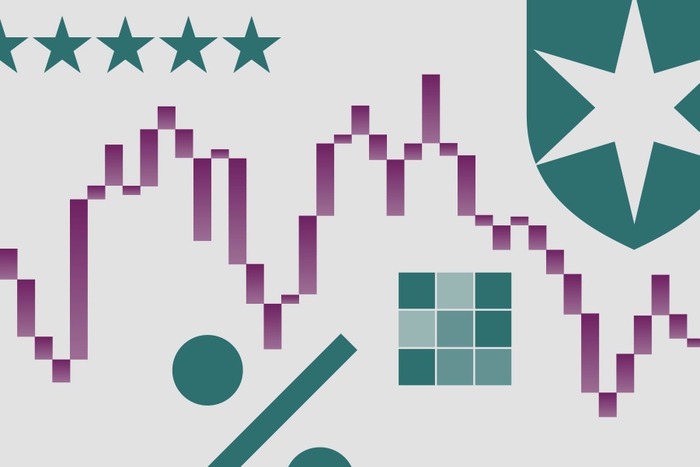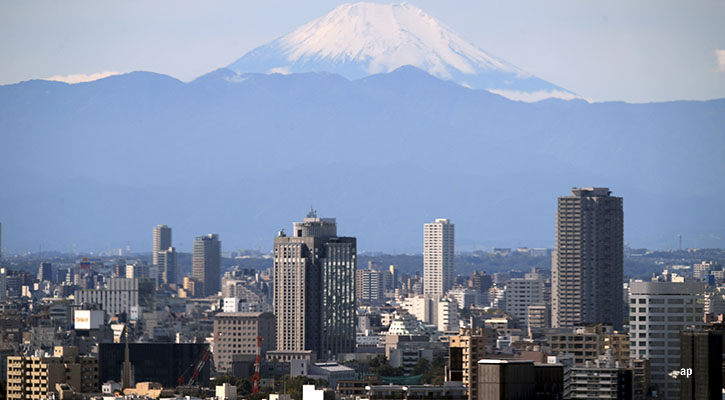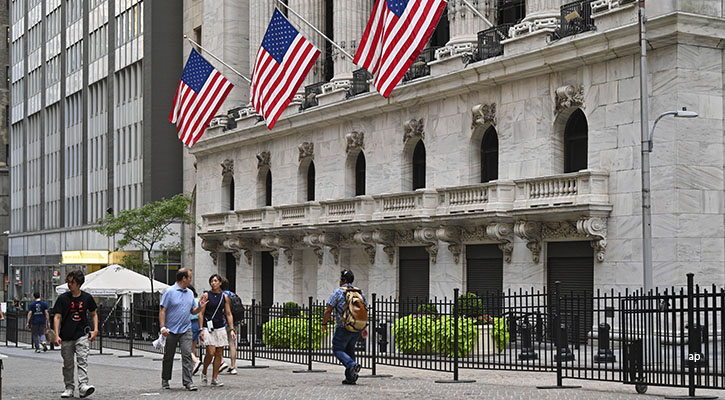There were two key events in the Asian ETF market during the month of October. First, the fourth RQFII ETF was launched in Hong Kong. The Harvest MSCI China A Index ETF (83118, 03118) was listed on 8 October 2012. It levies the lowest TER amongst the existing crop of RQFII ETFs (0.88% vs. 0.99%-1.15%). It was also the first listed security in Hong Kong to introduce dual counter trading, being traded in both Renminbi and Hong Kong dollars. The second major development in the Asian ETF market during the month of October was the listing of two Hong Kong Stock ETFs in China. These are the first cross-border ETFs listed in China. The funds track the Hang Seng Index and the Hang Seng China Enterprises Index. We view both of these as positive developments as we believe that dual counter trading will ultimately increase the on-screen trading volume for the RQFII ETFs, while the Chinese listings of the Hong Kong Stock ETFs could serve as a channel for domestic Chinese investors to invest outside of China.
While central bankers around the globe continue to fire their “bazookas”, implementing different types of monetary easing policies, global stock markets lost their positive momentum during the month of October. The S&P 500 Index slid 2% for the month while the FTSE 100 inched up 0.7% and the Straits Times Index and CSI 300 posted respective declines of 0.7% and 1.7%. Hong Kong stocks bucked the trend, posting solid gains for the month as the Hang Seng Index climbed 3.8% and the Hang Seng China Enterprises Index soared higher by 7.6%. “Hot” money flowing into the city was deemed the driver of this strong performance as evidenced by the fact that the Hong Kong dollar traded at strong-side of its trading band versus the US dollar. The Hong Kong Monetary Authority stepped into the market six times during the month selling US$2.55 billion worth of Hong Kong dollars to preserve the peg with the US dollar. Also worth noting is the fact that the Renminbi (RMB) appreciated 0.8% during the month, hitting the highest level since it was un-pegged from the US dollar in July 2005.
Central Bankers Keep Firing Their “Bazookas”
• Brazil’s central bank cuts rates to all time low – On 10 October 2012, Brazil’s central bank lowered its benchmark interest rate by 25 bps to an all-time low of 7.25%. Brazil’s central bank most recently cut its benchmark rate by 50bps in July 2012.
• The Bank of Korea cuts base rate – On 11 October 2012, The Bank of Korea (BOK) lowered its base interest rate by 25 bps from 3% to 2.75%. The BOK last cut rates by 25 bps in July 2012. At the same time, The BOK once again lowered the country’s GDP forecast, from the 3.0% level forecast in July 2012 to 2.4% and projected growth of 3.2% for 2013.
• Bank of Thailand cuts interest rate unexpectedly – On 17 October 2012, Thailand’s central bank cut its key lending rate by 25 bps from 3% to 2.75%. In Hong Kong and Singapore, there are 3 ETFs tracking Thai equity indices, including db x-trackers MSCI Thailand TRN Index ETF (03092, LG7; listed in Hong Kong and Singapore), Lyxor ETF Thailand (SET50 NET TR) (P2P; listed in Singapore) and XIE Shares Thailand (SET50) ETF (03069; listed in Hong Kong).
• India cuts cash reserve ratio again - On 30 October 2012, the Reserve Bank of India (RBI) announced it would cut its Cash Reserve Ratio (CRR) by 25 bps to 4.25% effective on 3 November 2012. This is the second time that the RBI cut CRR in two months. According to the statement by the RBI, the reduction to the CRR would release Rs175 billion into the banking system.
• Bank of Japan expands easing program again - On 30 October 2012, the Bank of Japan (BOJ) raised its asset purchase program to JPY66 trillion, up from JPY55 trillion while leaving its JPY25 trillion credit program unchanged, bringing its total asset purchases to JPY91 trillion (US$1.14 trillion). The BOJ had just expanded its asset purchase program by JPY10 trillion in September.
Chinese Economic Data: GDP Growth Bottoming? PMI at Over 50
• China’s Q3 GDP grew 7.4% on a year-over-year basis, slowing from 7.6% in Q2. This 7.4% growth rate was in-line with market expectations. Chinese GDP grew 7.7% year-over-year in the first three quarters of 2012, in-line with the 7.5% GDP growth target set by the government for 2012. This quarter’s figures were encouraging within that there was an uptick in GDP growth versus the prior quarter, with quarter-on-quarter growth registering at 2.2% in Q3 compared to 1.8% in Q2. According to the spokesman of the National Bureau of Statistics of China, China’s economy has realised steady development.
• China’s official October PMI (Purchasing Managers Index, which is an indicator for manufacturing activity) rose to 50.2 (up from 49.8 in September) returning to “expansion” territory.
“Dual Counter” Trading of RQFII ETFs
The Stock Exchange of Hong Kong (SEHK) has published an investor Q&A document on the “dual counter” model that has been rolled out for RQFII A-Share ETFs. The document outlines the details on “dual counter” trading for RQFII ETFs which allows RQFII ETFs to have dual stock codes which facilitate dual currency trading on the stock exchange (Renminbi and Hong Kong dollars). For further details on this development, please refer to our article “Flash: 4th RQFII ETF Has Arrived – Features a Lower TER and “Dual Counter” Trading” and SEHK’s Q&A document “Dual Counter Model for RQFII A-share ETFs”. The availability of “dual counter” trading will make transacting in these RQFII ETFs shares far easier for a wider spectrum of investors. We expect this development will ultimately increase the on-screen trading volume for these ETFs.
ChinaAMC CSI 300 Index ETF (83188), CSOP FTSE China A50 ETF (82822) and E Fund CSI 100 A-Share Index ETF (83100) have also announced that the SEHK has granted them approval for dual counter trading. With effect from 26 October 2012, 8 November 2012 and 9 November 2012, respectively, the three ETFs will also be trading in Hong Kong dollars under the respective HKD counter stock codes of 03188, 02822 and 03100.
RQFII ETF Watch
• New Batch of RQFII ETFs on the Way - According to the Ignites Asia, 4 more Chinese ETF providers are planning to launch RQFII ETFs in Hong Kong – China Universal Asset Management (Hong Kong), Da Cheng International Asset Management, Bosera Asset Management (International) and HuaAn Asset Management (Hong Kong). Reportedly, approvals by the China Securities Regulatory Commission (CSRC) are expected before the Chinese New Year holiday in February.
• CSOP Granted Additional RQFII Quota of RMB 3 billion – On 25 October 2012, CSOP FTSE China A50 ETF (82822, 02822) announced that its RQFII quota was once again fully utilised and creation of new units had been suspended. Just a week later, on 2 November, the ETF was granted additional quota of RMB 3 billion and the creation of new units resumed. Total RQFII quota for this ETF now amounts to RMB 10 billion.
• Harvest Granted Additional RQFII Quota of RMB 3 billion – On 2 November 2012, Harvest MSCI China A Index ETF (83118, 03118) was granted additional quota of RMB 3 billion. Total RQFII quota for this ETF now amounts to RMB 5 billion.
Markit iBoxx ABF Pan-Asia Indices – Rule Change and Weightings Change
Markit has announced a rule change for the Markit iBoxx ABF Pan-Asia Indices regarding the indices’ country weightings which will be effective from 31 October 2012. Previously, the indices’ market composition was based on four factors: local bond market size (weighted at 20%); sovereign local debt rating (20%); turnover ratio (20%); and market openness (40%). Upon the rule change the liquidity factor (turnover ratio) and investibility factor (market openness) will be replaced by the GEMLOC Investability Indicators, a transparent measure of a market’s investibility which uses multiple factors (turnover, bid-ask spreads, benchmark yield curve and bond pricing data) and was developed by the World Bank. As a result of the rule change, the country weights will be changed and implemented over a six-month transition period starting 31 October 2012 and ending 31 March 2013. The ABF Pan Asia Bond Index Fund (02821, listed in Hong Kong) tracks the Markit iBoxx ABF Pan-Asia Index which is included in the family of Markit iBoxx ABF Pan-Asia Indices.
_updated.png)
Rebranding of Mirae Asset TIGER ETFs to “Horizons” in Hong Kong
With effect from 5 November 2012, the names of the Hong Kong-listed Mirae ETFs will be changed from “Mirae Asset TIGER” to “Horizons”. For details on name changes, please refer to this notice.
New Launches and Listings
Dacheng Lists an ETF in China
On 8 October 2012, Dacheng Fund Management listed an ETF on the Shanghai Stock Exchange, namely the Dacheng CSI 500 SSE Stocks Index ETF (510440). The ETF tracks the CSI 500 SSE Stocks Index which is comprised of all the stocks traded on the Shanghai Stock Exchange within the CSI 500 Index. The CSI 500 Index aims to reflect the price performance of small-cap equities listed on the Shanghai and Shenzhen stock exchanges.
Samsung Lists an ETF in Korea
On 10 October 2012, Samsung Asset Management listed an ETF on the Korea Stock Exchange, namely the SAMSUNG KODEX Equity & Gold Balanced ETF (A166060). The ETF tracks the S&P/KRX Balanced Equity and Gold Index which is designed to track the return of an investment strategy that combines two different asset classes, equity and gold. The index has a pre-defined weight of 50% equity exposure (represented by the KOSPI 200 Index) and 50% gold exposure (represented by the S&P GSCI Gold Total Return Index—not physical gold).
Harvest Lists an ETF in Hong Kong
On 12 October 2012, Harvest listed an ETF on the Stock Exchange of Hong Kong, namely the Harvest MSCI China A Index ETF (83118, 03118). The ETF tracks the MSCI China A Index. The index has 541 constituent stocks with a free float adjusted market capitalisation of RMB 4,775 billion as of 28 September 2012, capturing approximately 85% of the free float market capitalisation of the investible domestic Chinese equity universe (the A-Share market). This is the fourth RQFII ETF in Hong Kong and is the first listed security in Hong Kong having “dual counter” trading, allowing it to be traded in both Renminbi and Hong Kong dollars. As compared to other RQFII ETFs in the market, Harvest’s ETF levies a lower TER of 0.88%. For further details, please refer to “Flash: 4th RQFII ETF Has Arrived – Features a Lower TER and “Dual Counter” Trading”.
China AMC Lists an ETF in China
On 22 October 2012, China AMC listed an ETF on the Shenzhen Stock Exchange, namely the China AMC Hang Seng Index ETF (159920). The ETF tracks the Hang Seng Index, which consists of the 49 largest stocks on the Stock Exchange of Hong Kong. Together with the E Fund Hang Seng China Enterprises Index ETF (510900), these are the first batch of ETFs listed in China which hold securities listed outside of China.
E Fund Lists an ETF in China
On 22 October 2012, E Fund listed an ETF on the Shanghai Stock Exchange, namely the E Fund Hang Seng China Enterprises Index ETF (510900). The ETF tracks the Hang Seng China Enterprises Index (a.k.a. the H-Share Index), which consists of the 40 largest H-Shares on the Stock Exchange of Hong Kong.
Mirae Lists an ETF in Korea
On 25 October 2012, Mirae listed an ETF on the Korea Exchange (KRX), namely the TIGER Covered C200 ETF, tracking the KOSPI200 Covered Call Index. The KOSPI 200 Covered Call Index, calculated by KRX, is an index that represents the synthetic position investment strategy which buys the constituents (spot basket) of KOSPI 200 and simultaneously sells KOSPI 200 call options.
Woori Lists Leveraged ETF in Korea
On 30 October 2012, Woori Asset Management listed a new ETF on the KRX, namely the Woori KOSEF 10YKTB Leverage ETF, tracking the KIS 10Y KTB Total Return Index, with a daily leverage factor of 2X. The KIS 10Y KTB Total Return Index is comprised of three issues of 10-year Korean treasury bonds.
PT Indo Premier Lists an ETF in Indonesia
On 30 October 2012, PT Indo Premier Investment Management listed an ETF on the Indonesia Stock Exchange, namely the Premier ETF IDX30, tracking the IDX 30 Index. The IDX 30 Index tracks the 30 largest stocks listed on the Indonesia Stock Exchange. This is the third ETF listed on the Indonesia Stock Exchange.
List of ETFs Launched in October 2012
.png)
Jackie Choy, CFA is an ETF Strategist with Morningstar.

















